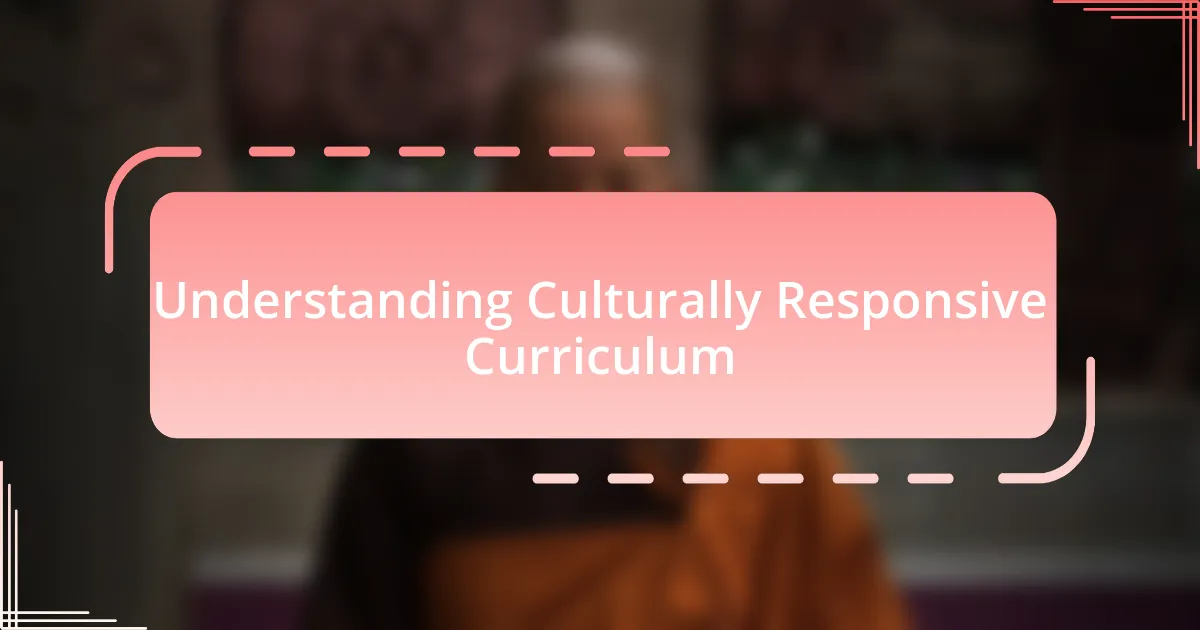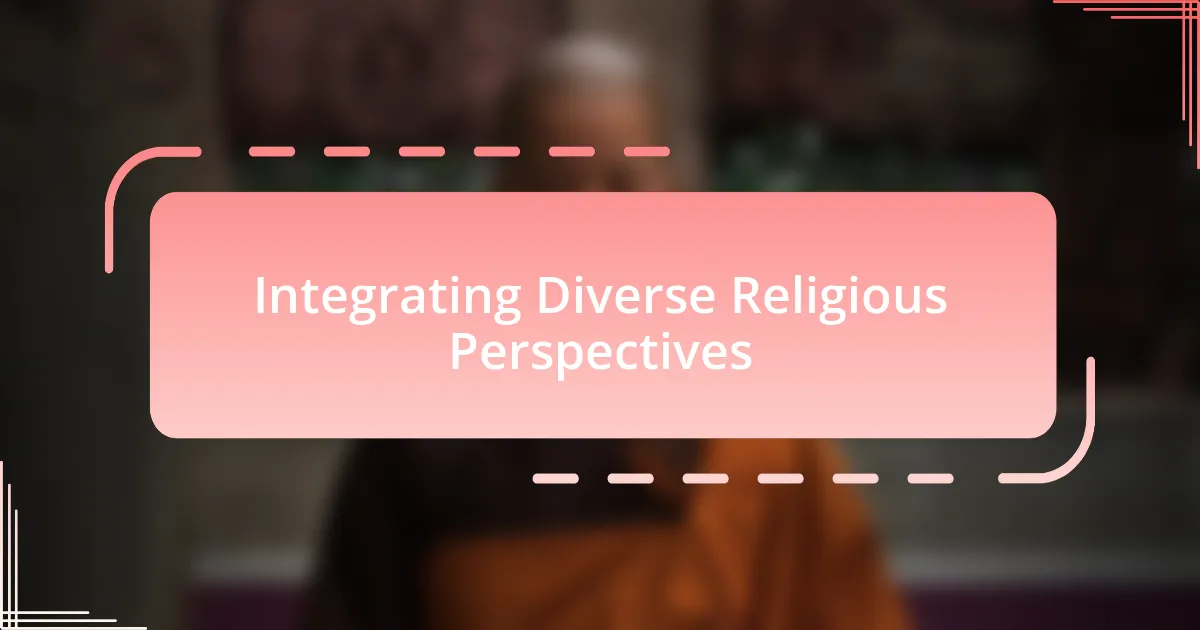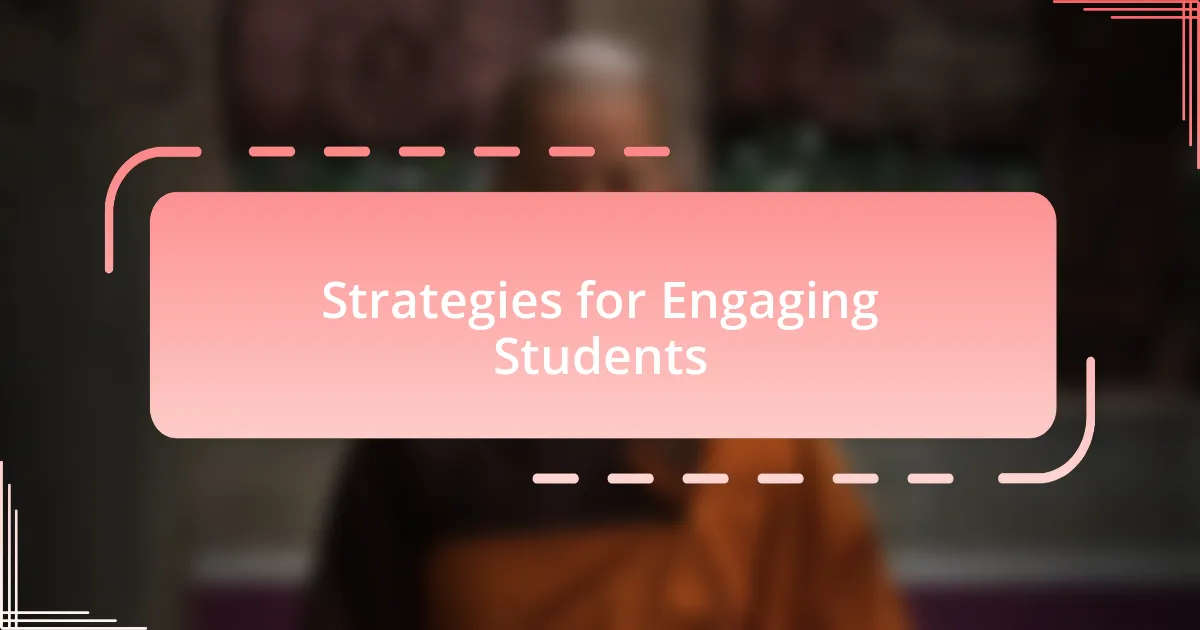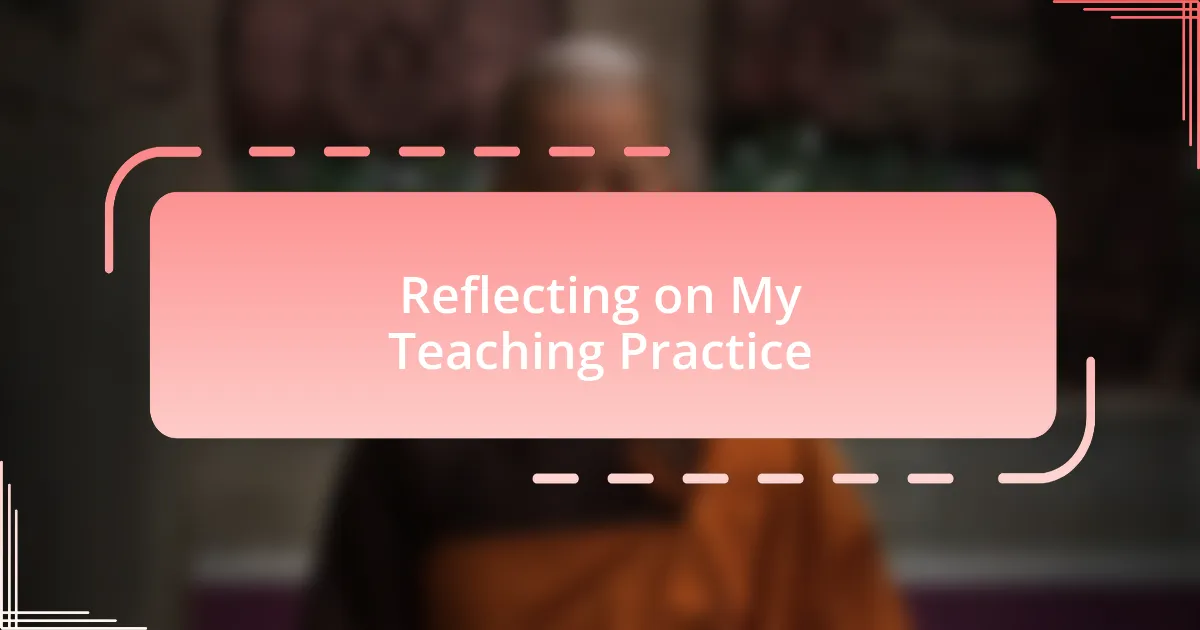Key takeaways:
- A culturally responsive curriculum values students’ diverse backgrounds, actively engaging them in their learning and fostering a sense of belonging.
- Culturally responsive teaching enhances connections between educators and students, boosting confidence and promoting critical thinking and empathy through dialogue and personal experiences.
- Integrating diverse religious perspectives enriches the classroom environment, encourages mutual respect, and allows students to reconsider their beliefs and foster community.
- Reflective teaching practices are essential for creating a culturally responsive environment, as they help educators adapt strategies to better resonate with students’ backgrounds and experiences.

Understanding Culturally Responsive Curriculum
A culturally responsive curriculum is all about recognizing and valuing the diverse backgrounds of students. I recall a time when I introduced a lesson that included stories from various religious traditions. The discussion that followed opened my eyes to the students’ rich experiences and perspectives, which made the lesson not just informative, but truly engaging. Have you ever noticed how often students light up when they see their lives reflected in the classroom materials?
Effective culturally responsive teaching goes beyond mere inclusion; it actively involves students in their learning journey. I remember facilitating a project where each student researched a religious festival from their culture. The excitement was palpable as they presented their findings, and I could see their pride in sharing their heritage. How might we better tap into the unique cultural narratives our students bring into our classrooms?
In essence, a culturally responsive curriculum empowers students by affirming their identities and experiences. I’ve seen firsthand how this approach not only fosters a sense of belonging but also enhances academic engagement. Could it be that by embracing our students’ cultural contexts, we can unlock their full potential?

Importance of Culturally Responsive Teaching
Culturally responsive teaching is crucial because it builds strong connections between educators and students. I recall a specific instance where I incorporated music from different cultures into a lesson. The joy that erupted when students heard songs from their families was undeniable; it was as though the classroom transformed into a cultural celebration. How often do we underestimate the power of music in bridging gaps and fostering understanding?
Moreover, recognizing and validating students’ cultural identities can significantly boost their confidence and motivation. I once taught a lesson that focused on the stories of religious leaders from various backgrounds. Watching my students debate and discuss their views was incredibly rewarding, and it highlighted how affirmation can mold their willingness to engage deeply with the material. Isn’t it fascinating how a simple acknowledgment can lead to profound discussions?
In my experience, culturally responsive teaching does more than just promote respect for diversity; it actively fosters critical thinking and empathy. I’ve noticed that when students draw connections between their experiences and the curriculum, they become more thoughtful and compassionate individuals. How can we encourage this kind of deep learning in our classrooms? Reflecting on these strategies has made me reconsider the ways I present information, ensuring it resonates with all students.

Integrating Diverse Religious Perspectives
Integrating diverse religious perspectives in the classroom can truly enrich the learning environment. I once organized a session where students presented their family traditions related to religious practices. The excitement in their voices while sharing personal stories created an atmosphere of mutual respect and curiosity, highlighting the ways faith shapes individual lives. Have you noticed how sharing personal experiences can make discussions more relatable and engaging?
Incorporating these varied perspectives allows students to grasp the nuances within different belief systems. I remember a vibrant discussion sparked by comparing rituals from various religions; students expressed surprising insights that challenged their own preconceived notions. It was rewarding to see them not only listen but also reconsider their beliefs, leading to discussions that were both respectful and thought-provoking. Isn’t it remarkable how dialogue can expand our views beyond our own experiences?
Moreover, integrating diverse religious viewpoints fosters a sense of community in the classroom. I’ve seen firsthand how students feel more valued and understood when their backgrounds are acknowledged. When we explore topics like moral teachings from various religions, it opens up pathways for students to connect on deeper levels. How can we create opportunities for these connections, ensuring every student feels seen and heard in their educational journey?

Strategies for Engaging Students
One effective strategy for engaging students is utilizing collaborative projects that allow them to work together while exploring religious themes. I recall a time when I assigned a group project where students collaborated to create a visual representation of a religious holiday from different cultures. The process was filled with laughter, debates, and vibrant creativity. It’s fascinating to observe how teamwork fosters not only knowledge but also a sense of belonging—did you ever notice how shared goals can ignite friendships?
Another approach I’ve found successful is incorporating storytelling as a tool for learning. In one class, I invited students to share parables or religious stories from their backgrounds. This not only encouraged active participation but also helped them connect emotionally with the material. I noticed their eyes lighting up as they recounted tales that held significance in their lives. Have you ever thought about how narratives can serve as bridges to understanding diverse belief systems?
Lastly, offering choices in assignments can significantly enhance student engagement. I remember providing my students with options to either write a paper, produce a podcast, or create an art piece reflecting on a religious principle of their choice. The variety allowed each student to tap into their unique strengths and interests, resulting in a more invested learning experience. Isn’t it amazing how allowing students to express themselves in ways that resonate with them can lead to deeper understanding and enthusiasm?

Assessing Culturally Relevant Learning
Assessing culturally relevant learning requires a multifaceted approach that considers students’ diverse backgrounds. I recall a time when I integrated formative assessments that focused not just on content knowledge but also on students’ cultural perspectives. For example, I created a reflective journal assignment where students could express their thoughts on how religious beliefs influence their identity. It was enlightening to see their personal reflections, revealing how deeply intertwined culture and faith can be.
In my experience, utilizing peer assessments opens up an avenue for students to learn from one another’s cultural contexts. I often pair students to assess each other’s work, where they provide feedback based on cultural relevance. This process not only encourages critical thinking but fosters respect and appreciation for different worldviews. Have you ever witnessed how peer conversations can challenge assumptions and broaden understanding?
Finally, formal assessments can benefit from incorporating diverse cultural scenarios that students can relate to. I once included a case study on a religious festival celebrated in various countries, inviting students to analyze its significance from different cultural perspectives. I was amazed at their enthusiasm in drawing parallels and distinctions, which led to rich discussions. Isn’t it rewarding to see students actively engaging and applying their cultural knowledge when given the right context?

Reflecting on My Teaching Practice
Reflecting on my teaching practice has often led me to consider the significance of creating a culturally responsive environment. One memorable instance was during a lesson on global religious practices. I was amazed by how students shared stories of their own family traditions, illuminating cultural nuances I hadn’t fully understood. It was a humbling moment that reinforced the importance of listening and learning from my students’ experiences.
In my classroom, I strive to create an open dialogue about cultural differences, and this requires intentional reflection on my part. I vividly remember a student who struggled to connect with the curriculum, feeling that it didn’t reflect her reality. After discussing her concerns, I realized how crucial it is to adapt my teaching strategies. This experience prompted me to review my lesson plans and incorporate more diverse viewpoints, ultimately creating a deeper engagement among my students.
Sometimes, I pause to question whether I am genuinely making an impact. Am I truly aware of my students’ backgrounds and how they shape their learning? Regularly contemplating this allows me to evaluate my effectiveness and adapt my methods. I find that such reflection not only benefits my students but also rejuvenates my passion for teaching, reminding me that education is a two-way street.